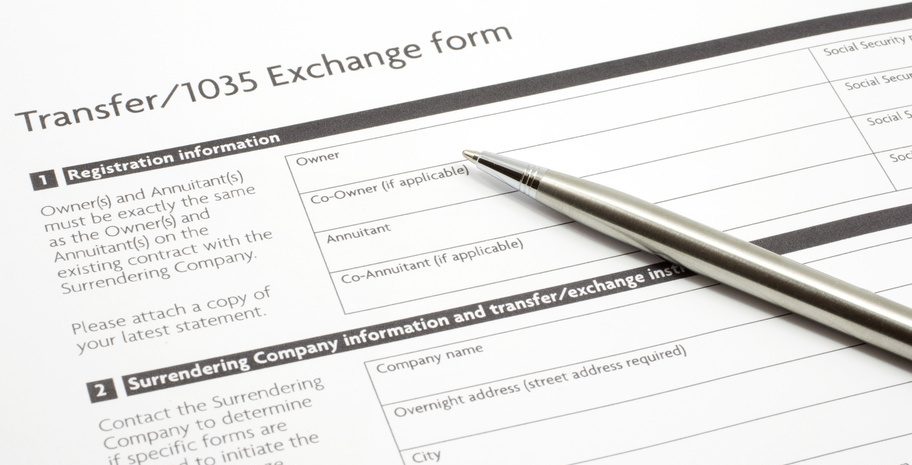
Ah, the holidays… an annual time of food, fellowship, and fun with family, friends, and loved ones. Everyone returns home and catches up on all of the family happenings over the past year.
But the holidays can also be stressful and fast-paced, as people have cookies to bake, presents to wrap, and shopping to do. Not only that, they may have various other year-end projects at home or at work. Those who have lost loved ones or who hurt in other ways might also find these times unbearable, since the holiday season tends to be an emotional period.
Even so, it’s still an ideal time for families to get together and discuss their financial concerns with their loved ones.
Why? Because people usually aren’t as preoccupied by work and day-to-day matters at this time of year. The holiday festivities may be one of the few times when everyone is together. There are also many decisions that must be made before the year ends. Read More

Have you ever seen a documentary on thrill-seekers heading to some far-flung destination?
Scaling Mount Everest. Base-jumping off Europe’s Troll Wall. Biking on the World’s Most Dangerous Road in Bolivia. Traversing the Alps.
Whether one of these treks or someplace else, chances are you will see that they have something in common. Rarely do the thrill-seekers go it alone.
Their expeditions often include some sort of guide. And not just any guide. It’s someone who knows the terrain, understands the challenges, and offers the experience to successfully navigate potential mishaps.
Although they don’t involve thrill-seeking, money matters can operate in the same fashion. Without guidance from an advisor, it’s easy to make choices that lead not to financial wellness but to fiscal misery.
“Watch Out for These Financial Blunders.” Read More

Financial mistakes are something we all experience at some point in life. Whether it’s overspending, not saving enough, or making poor investment decisions, these blunders often stem from our behaviors and financial habits. Understanding these common missteps can help prevent financial hardship and set the stage for a secure future.
The Behavioral Trap of Financial Mistakes
Most financial blunders originate from emotional decision-making rather than rational planning. Many people adopt a “ready-fire-aim” mentality when it comes to spending—they act impulsively because they want something, often convincing themselves that they need it. This emotional response leads to financial strain, especially when key information is ignored in the decision-making process. Read More

Editor’s Note: This article is Part 2 of a month-long series on financial illiteracy in America. April marks National Financial Literacy Month, and to help raise Americans’ financial awareness, SafeMoney.com is teaming up with the Society for Financial Awareness (SOFA), a leading financial literacy non-profit, to spread the word.
When venturing into the great unknown, you wouldn’t travel without a GPS or a map.
They are a “must-have” for reaching your destination. And for arriving on time, for that matter! How otherwise could you tell if you were going the right direction or if you were lost?
The same principle applies to our retirement. Whether you retire 10 years or 10 months from now, you need a financial plan.
In many ways, a plan is like a financial roadmap. It lays out clear directions for you to take and helps you keep on track.
Yet most people don’t have a roadmap for their future retirement. Just three percent of Americans have a written financial plan, according to Jim Chilton, founder and CEO of the Society for Financial Awareness. Read More

If consumer studies give any indication, America needs a financial wake-up call.
A lack of consumer financial awareness is taking a toll nationwide, as InvestmentNews covers in a recent story. And the effects of what the advisory news publisher calls a “financial literacy crisis” are significant.
Almost two-thirds of people shows signs of low financial awareness, according to FINRA. Financial advisors also recognize the challenge. In a survey by InvestmentNews, 78% of advisors strongly agreed that financial literacy is of national concern.
WalletHub reports that the average household credit card debt is the highest it has been in nearly a decade. Financial stress is affecting work productivity, according to a recent survey of 10,000 employees by Salary Financial.
Nearly one in two Americans (48%) said they worry about their finances, leading to sleep loss, distractions at work, and other disruptors in work performance. The survey drew responses from employees ranging from entry-level to C-suite professionals.
In turn, this wave of personal financial stress costs U.S. businesses $500 billion per year in lost productivity, Salary Financial estimates.
And the washout from lower financial awareness isn’t limited to just working-age Americans, either. Read More

Buckle up, everyone. The holidays are just around the corner. And while they bring a spirit of joy and cheer, they can also be a stressful time for many Americans.
From Thanksgiving dinners and holiday shopping to seasonal parties and family get-togethers, there is no shortage of events in which folks participate.
Aside from the festivity, fellowship, and merriment, however, people can “feel the heat” in their money matters in a number of ways. And how might that be?
The pressure to overspend, for one. According to a recent survey by NerdWallet, a little over half of all Americans (51%) say they “typically overspend” on gifts.
Meanwhile, 39.4 million Americans are still paying off debt from last year’s holiday spending spree. And gift shopping is just one of many seasonal expenses that can keep the holiday cash register ringing.
Expenditures such as these can put the strain on retirees, who are more likely to have fixed incomes than other age groups. Not only that, the pressure of growing debt loads can have an impact on people’s retirement goals, not to mention any other financial objectives they may have.
But there is good news. Taking the right steps can go a long way toward achieving more financial security. If you, and your partner, are in your 50s or 60s, it’s good to start laying out your goals, mapping out a strategy for your future, and taking action so your money can work hard for you.
Here are some steps you can take to improve your financial wellness and potentially be more confident for the years ahead. Read More

Do you have a current annuity or insurance policy that doesn’t fit your needs well? If you are on the lookout for a new policy, a 1035 exchange may be a worthwhile option.
A 1035 exchange is a section of the U.S. tax code that lets policyholders replace an existing annuity or insurance policy with a new policy – and with no tax consequences. This tax-free exchange may be used for life insurance policies, modified endowment contracts (MECs for short), and non-qualified annuities toward a new policy.
With new waves of innovation available – such as living benefits for terminal illnesses or long-term care situations – you might wish to explore new options. The good news is you don’t have to keep your current policy forever.
Let’s take a closer look at how a 1035 exchange may and may not benefit a policyholder looking for new annuity or insurance choices. Read More

Editor’s Note: This is the last feature in a fourt-part series on financial education for April, which is National Financial Literacy Month. To see the first part of this series, click here.
As Benjamin Franklin is credited with saying, “An investment in knowledge pays the best interest.” But actually investing in gaining more financial knowledge is an activity that many Americans don’t seem to do.
While studies suggest that lots of people understand the value of financial literacy, the truth is many things compete for our time. When so much is going on, it’s easy to put learning time for money matters on the back-burner. Even so, what we know drives our money behaviors and decisions, and so a gap in knowledge can hit home in many ways.
This is a complex problem for several reasons. For instance, in one survey, GoBankingRates found that over half of Americans have less than $1,000 in savings. In another study by TD Ameritrade, 96% of Americans knew what they paid for streaming media services like Netflix, but only 27% knew what they paid in 401(k) plan fees.
In fact, the majority of investors in the TD Ameritrade survey thought they paid no employer plan fees, didn’t know if their plans had fees, or didn’t know how to determine the fees. Other studies have also captured similar data with investors and their familarity with their employer retirement plans.
All of this adds up to an ongoing cycle of money headaches, mistakes, and disappointments for many households. Read More

Editor’s Note: This is the third part of a four-part series on financial literacy in the United States. You can find Part 1 of the series here. Stay tuned for more helpful articles on how you can reach the retirement you have worked hard to attain.
Like other working-age investors, you may have a 401(k) account — or another employer retirement plan. In anticipation of the future, you probably are socking away money for retirement. And if you are lucky, your employer is even contributing to help your nest egg grow even more.
But, with April being National Financial Literacy Month, now is a good time to be honest with ourselves. Many working-age investors don’t fully know what their investments are. Various studies, like the “Wellness in the Workplace” survey by KRC Research, have shown that, in many cases, the majority of working investors don’t understand their retirement plan make-up.
So, take a moment to ask yourself about whether everything makes sense to you. It’s okay to admit not being fluent in your 401(k) – or even retirement in general – because money matters are hard enough for many of us. And when it comes to retirement issues, you aren’t alone.
A comprehensive barometer of U.S. adults’ readiness to make sound financial decisions is found in the TIAA Institute-GFLEC Personal Finance Index (P-Fin Index) from TIAA Institute and the Global Financial Literacy Excellence Center. This report examines financial literacy across eight common activities: earning, spending, saving, investing, borrowing, insuring, understanding risk, and gathering information.
And the findings aren’t great. Read More

Editor’s Note: This is the first part of a four-part series on financial literacy in the United States. You can find Part 1 of the series here. Stay tuned for more helpful articles on how you can reach the retirement you have worked hard to attain.
If financial matters concern you, you aren’t alone.
A recent survey conducted by Harris Poll on behalf of Purchasing Power, reveals that 87% of survey participants who are employed full-time (or have a spouse employed full-time) are at least somewhat stressed about their current finances. And 25% of the people feeling the heat over money matters measure their stress level as either “quite a bit” or “a great deal” of stress.
So what’s worrying everyone? Plenty. Household bills are the major cause of financial stress among the 900 participants in the Purchasing Power survey. Read More


















